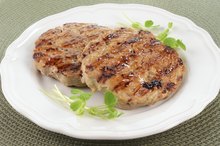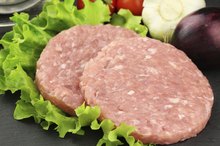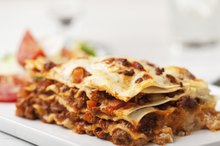What does fact checked mean?
At Healthfully, we strive to deliver objective content that is accurate and up-to-date. Our team periodically reviews articles in order to ensure content quality. The sources cited below consist of evidence from peer-reviewed journals, prominent medical organizations, academic associations, and government data.
The information contained on this site is for informational purposes only, and should not be used as a substitute for the advice of a professional health care provider. Please check with the appropriate physician regarding health questions and concerns. Although we strive to deliver accurate and up-to-date information, no guarantee to that effect is made.
Turkey Pepperoni Nutritional Facts
Turkey pepperoni is, as the name implies, pepperoni, a spiced, dried sausage, made from turkey, rather than the usual pork. Used appropriately, turkey pepperoni can be a good choice for your healthy, low-fat lifestyle.
Tips
Turkey Pepperoni has 233 Calories and 26.67 g of Protein per 100 gram serving according to the nutrition facts provided by the USDA Food Composition Database.
Types and Serving Sizes
The turkey pepperoni listing at the USDA National Nutrient Database references sliced turkey pepperoni 1. Serving sizes vary by manufacturer. For example, one brand lists 14 slices as a serving, another lists 16 slices, and another lists one stick. Read labels and plan your intake.
- The turkey pepperoni listing at the USDA National Nutrient Database references sliced turkey pepperoni 1.
- Read labels and plan your intake.
Nutrients
Turkey Burger Nutrition Information
Learn More
Like serving sizes, nutrition facts vary by product. However, a nationally-available store brand of turkey pepperoni contains 73 calories, 4.46 grams of fat, 1.10 grams of saturated fat, and 9.30 grams of protein per 30 gram serving, or approximately 15 slices, according to the USDA.
Benefits
Turkey pepperoni has fewer calories and less fat than pork-based sausage. The pork version of a nationally-available store brand has twice the calories, 8.5 more grams of fat, and 3.5 more grams of saturated fat than the turkey version, according to the USDA.
Considerations
Ground Turkey Nutrition Information
Learn More
One drawback of turkey pepperoni is its sodium content. The aforementioned store brand contains a whopping 25 percent of the daily value for sodium. Sodium can predispose you to heart attacks and stroke, according to the American Heart Association, so limit turkey pepperoni to a once-in-a-while treat 2. The AHA recommends eating less than 1500 milligrams of sodium daily.
- One drawback of turkey pepperoni is its sodium content.
- The aforementioned store brand contains a whopping 25 percent of the daily value for sodium.
Related Articles
References
- USDA National Nutrient Database: HORMEL Pillow Pak Sliced Turkey Pepperoni
- American Heart Association: Sodium
- FoodData central. Turkey, all classes, leg, meat and skin, cooked, roasted. U.S. Department of Agriculture. Updated 2019.
- Martone AM, Marzetti E, Calvani R, et al. Exercise and protein intake: A synergistic approach against sarcopenia. Biomed Res Int. 2017;2017:2672435. doi:10.1155/2017/2672435
- Cao Y, Strate LL, Keeley BR, et al. Meat intake and risk of diverticulitis among men. Gut. 2018;67(3):466-472. doi:10.1136/gutjnl-2016-313082
- Iron: Fact Sheet for Health Professionals. National Institutes of Health, Office of Dietary Supplements. Updated 2020.
- Skerrett PJ. Turkey: A Healthy Base of Holiday Meals. Harvard Health Publishing, Harvard Medical School. Updated 2012.
- Meat Allergy. American College of Allergy, Asthma & Immunology. Updated 2019.
- Laatsch DR. Raising turkeys as a 4-H or FFA project. Extension Dodge County University of Wisconsin-Madison. Updated 2012.
- Let's Talk Turkey—A Consumer Guide to Safely Roasting a Turkey. U.S. Department of Agriculture. Updated 2015.
Writer Bio
Melanie Greenwood has been a freelance writer since 2010. Her work has appeared in "The Denver Post" as well as various online publications. She resides in northern Colorado and she works helping to care for elderly and at-risk individuals. Greenwood holds a Bachelor of Arts in pastoral leadership from Bethany University in California.









